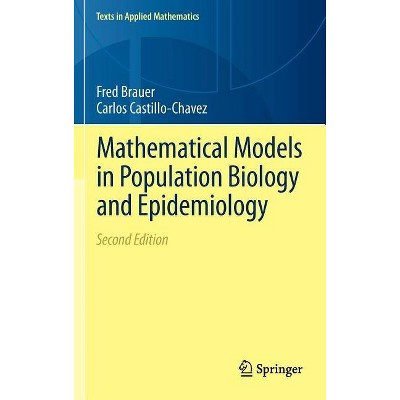Mathematical Methods in Biology - (Pure and Applied Mathematics: A Wiley Texts, Monographs and Tracts) by J David Logan & William Wolesensky

Similar Products
Products of same category from the store
AllProduct info
<p/><br></br><p><b> From the Back Cover </b></p></br></br>A one-of-a-kind guide to using deterministic and probabilistic methods for solving problems in the biological sciences <p>Highlighting the growing relevance of quantitative techniques in scientific research, Mathematical Methods in Biology provides an accessible presentation of the broad range of important mathematical methods for solving problems in the biological sciences. The book reveals the growing connections between mathematics and biology through clear explanations and specific, interesting problems from areas such as population dynamics, foraging theory, and life history theory.</p> <p>The authors begin with an introduction and review of mathematical tools that are employed in subsequent chapters, including biological modeling, calculus, differential equations, dimensionless variables, and descriptive statistics. The following chapters examine standard discrete and continuous models using matrix algebra as well as difference and differential equations. Finally, the book outlines probability, statistics, and stochastic methods as well as material on bootstrapping and stochastic differential equations, which is a unique approach that is not offered in other literature on the topic.</p> <p>In order to demonstrate the application of mathematical methods to the biological sciences, the authors provide focused examples from the field of theoretical ecology, which serve as an accessible context for study while also demonstrating mathematical skills that are applicable to many other areas in the life sciences. The book's algorithms are illustrated using MATLAB(R), but can also be replicated using other software packages, including R, Mathematica(R), and Maple; however, the text does not require any single computer algebra package. Each chapter contains numerous exercises and problems that range in difficulty, from the basic to more challenging, to assist readers with building their problem-solving skills. Selected solutions are included at the back of the book, and a related Web site features supplemental material for further study.</p> <p>Extensively class-tested to ensure an easy-to-follow format, Mathematical Methods in Biology is an excellent book for mathematics and biology courses at the upper-undergraduate and graduate levels. It also serves as a valuable reference for researchers and professionals working in the fields of biology, ecology, and biomathematics.</p><p/><br></br><p><b> Review Quotes </b></p></br></br><br>Admirably, the volume is written with bits of MATLAB code inserted at appropriate places and has exercises interspersed throughout the text (as well as hints for solutions to the exercises at the end of the book). The Quarterly Review of Biology, June 2010) <p> The mathematical and reasoning sophistication increases as the chapters proceed. <i>(Book News, </i> December 2009)</p><br><p/><br></br><p><b> About the Author </b></p></br></br><p>J. David Logan, PhD, is Willa Cather Professor of Mathematics at the University of Nebraska-Lincoln. He has written more than eighty research articles in his areas of research interest, which include mathematical physics, combustion and detonation, hydrogeology, and mathematical biology. Dr. Logan is the author of Applied Mathematics, Third Edition and An Introduction to Nonlinear Partial Differential Equations, Second Edition, both published by Wiley. William R. Wolesensky, PhD, is Associate Professor in the Department of Mathematics at Doane College. Dr. Wolesensky has written numerous journal articles on the use of mathematical modeling techniques in scientific research.</p>
Price History
Price Archive shows prices from various stores, lets you see history and find the cheapest. There is no actual sale on the website. For all support, inquiry and suggestion messages communication@pricearchive.us




















